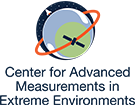Due to COVID-19 pandemic impacts on team members, UTSA's 2020-2021 NSL project has been cancelled.
NASA Student Launch 2020-2021
October 2020–April 2021
The NASA Student Launch is a research-based, competitive, experiential exploration activity. It strives to provide relevant, cost-effective research and development of rocket propulsion.
During the eight-month project, College/University Division student teams design, build, and fly payloads or vehicle components that support Space Launch Systems. The UTSA student team is supported by CAMEE, the College of Sciences Student Success Center, and the College of Engineering Student Success Center.
Teams complete a series of design reviews that mirror the NASA engineering design lifecycle. Teams must successfully complete a Preliminary Design Review, Critical Design Review, Flight Readiness Review, and Launch Readiness Review which include safety briefings, analysis of vehicle and payload systems, and flight test data.
Each team must pass a review to progress to a subsequent review. Teams present their PDR, CDR, and FRR to a review panel of scientists, engineers, technicians, and educators via video teleconference. Review panel members, Range Safety Officer, and Subject Matter Experts provide feedback and ask questions in order to increase the fidelity between the team's work and research objectives, and will score each College/University Division team.
Project Deliverables
- A reusable rocket with required payload system ready for official launch.
- A scale model of the rocket design must be flown during the PDR or CDR milestones and the flight data reported in the CDR.
- A full-scale Vehicle Demonstration Flight and Payload Demonstration Flight must be flown and flight data reported in the FRR and/or FRR Addendum.
- A team social media presence established and maintained/updated throughout the project year.
- Reports, PDF slideshows, and Milestone Review Flysheets completed and submitted to the Student Launch Projects management team by due dates.
- Electronic copies of the STEM Engagement form(s) submitted after proposal acceptance, prior to FRR, and within two weeks of the STEM engagement event.
- Completion of PDR, CDR, FRR, FRR addendum (if applicable), LRR, and PLAR.
Timeline
Click here to see the NASA Student Launch timeline. (dates are subject to change)
Aug 19, 2020 |
Request for Proposal (RFP) released |
Sep 21, 2020 |
Electronic copy of completed proposal due to project office by 3 p.m. CDT |
Oct 1, 2020 |
Awarded proposals announced |
Oct 7, 2020 |
Kickoff and PDR Q&A |
Oct 21, 2020 |
Team social media presence established |
Nov 2, 2020 |
PDR report, presentation slides, and flysheet submitted to NASA management team by 8:00 a.m. CST |
Nov 3-22, 2020 |
PDR video teleconferences |
Nov 23, 2020 |
CDR Q&A |
Jan 4, 2021 |
Subscale Flight deadline |
Jan 7-26, 2021 |
CDR video teleconferences |
Jan 27, 2021 |
FRR Q&A |
Mar 8, 2021 |
VDF deadline |
Mar 11-29, 2021 |
FRR video teleconferences |
Mar 29, 2021 |
Payload Demonstration Flight and Vehicle Demonstration Re-flight deadlines |
Mar 30, 2021 |
Launch window opens for teams not traveling to Launch Week |
Mar 31, 2021 |
Launch Week Q&A |
Apr 7, 2021 |
Teams travel to Huntsville, AL |
Apr 8, 2021 |
Official Launch Week Kickoff, LRRs, Launch Week activities |
Apr 9, 2021 |
Launch Week activities |
Apr 10, 2021 |
Launch Day and Awards Ceremony |
Apr 11, 2021 |
Backup Launch Day |
Apr 27, 2021 |
Teams travelling to Launch Week: PLAR submitted to NASA project management team by 8:00 a.m. CDT |
UTSA Team
Carolyn Alvarado (Freshman, Physics) – Outreach and Social Media Team Leader
Kate Benoit (Sophomore, Geology) – Safety, Social Media
Dillon Emmele (Senior, Mathematics) – Rocket and Payload Design, Reports
Evelyn Fernandez (Freshman, Biomedical Engineering) – Lead Safety Officer, Reports
Madeline Hickman (Freshman, Mechanical Engineering) –- Team Leader, Rocket and Payload Design, Reports
Jasmyn Johnson (Junior, Physics) – Rocket and Payload Design, Social Media
Adolfo Santa Fe Duenas (Doctoral, Physics) – Rocket and Payload Design
Daniel Wood (Senior, Physics) – Rocket and Payload Design, Reports
UTSA Faculty Advisor
Dr. Christopher Combs, COE Mechanical Engineering, Christopher.Combs@utsa.edu
Mentor
Don Cosgrove, San Antonio Rocket Society, cosgrove-don@msn.com
Media
Project Acronyms
- AGL-Above Ground Level
- APCP-Ammonium Perchlorate Composite Propellant
- ASC-Artemis Student Challenges
- CDR-Critical Design Review
- CG-Center of Gravity
- CP-Center of Pressure
- FAA-Federal Aviation Administration
- FMEA-Failure Modes and Effects Analysis
- FN-Foreign National
- FRR-Flight Readiness Review
- HEO-Human Exploration and Operations
- LCO-Launch Control Officer
- LRR-Launch Readiness Review
- MSDS-Material Safety Data Sheet
- MSFC-Marshall Space Flight Center
- NAR-National Association of Rocketry
- NASA-National Aeronautics and Space Administration
- PDF-Portable Document Format
- PDR-Preliminary Design Review
- PHA-Personnel Hazard Analysis
- PLAR-Post Launch Assessment Review
- PPE-Personal Protective Equipment
- RFP-Request for Proposal
- RSO-Range Safety Officer
- SLI-Student Launch Initiative
- SLS-Space Launch System
- SME-Subject Matter Expert
- SOW-Statement of Work
- STEM-Science, Technology, Engineering, and Mathematics
- TRA-Tripoli Rocketry Association
- UAS-Unmanned Aerial System
- USLI-University Student Launch Initiative
- VDF-Vehicle Demonstration Flight
- WBS-Work Breakdown Structure










